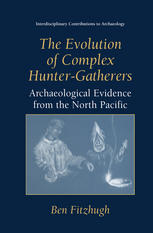

Most ebook files are in PDF format, so you can easily read them using various software such as Foxit Reader or directly on the Google Chrome browser.
Some ebook files are released by publishers in other formats such as .awz, .mobi, .epub, .fb2, etc. You may need to install specific software to read these formats on mobile/PC, such as Calibre.
Please read the tutorial at this link: https://ebookbell.com/faq
We offer FREE conversion to the popular formats you request; however, this may take some time. Therefore, right after payment, please email us, and we will try to provide the service as quickly as possible.
For some exceptional file formats or broken links (if any), please refrain from opening any disputes. Instead, email us first, and we will try to assist within a maximum of 6 hours.
EbookBell Team

5.0
40 reviewsIn 1987, I had the good fortune to join in the excavation of a phenomenal archae ological site on the western coast of Kodiak Island, in Alaska. The New Karluk site (a. k. a. , "Karluk One") was perched on the edge of the small village of Karluk at the mouth of the river of the same name, once one of the most productive salmon rivers in the North Pacific. I had just completed my sophomore year of college, and under the direction of Richard Jordan, I enthusiastically joined sev eral other students in the Kodiak Archaeology Projects New Karluk excavation. I had participated in my father's archaeological research in Eastern Canada since early childhood, but the Karluk dig was unlike any archaeology I had experienced before. For three months, we peeled back layers of grass, wood, and earth floors separated by remnants of ancient sod roofs. Due to the unusual preservation and richness of the site, at every tum we uncovered perishable items such as bent-wood bowls, masks, dolls, puffin-beak rattles, grass baskets, fragments of fiber netting, locks of hair, and food waste. Preservation was so excellent, in fact, that we often exposed grass blades still green after hundreds of years, which once exposed to air would tum brown before our eyes.